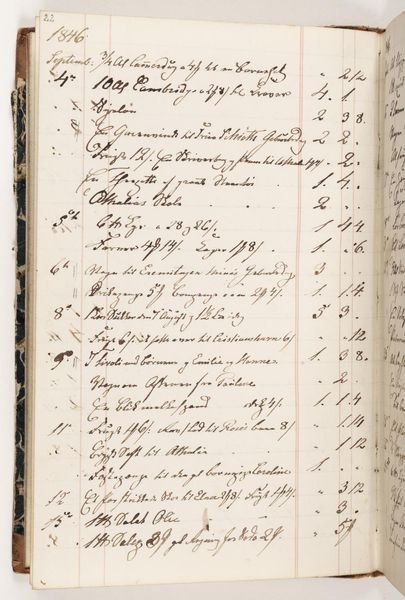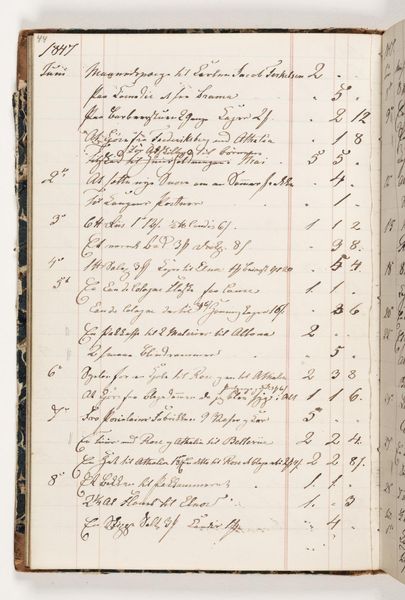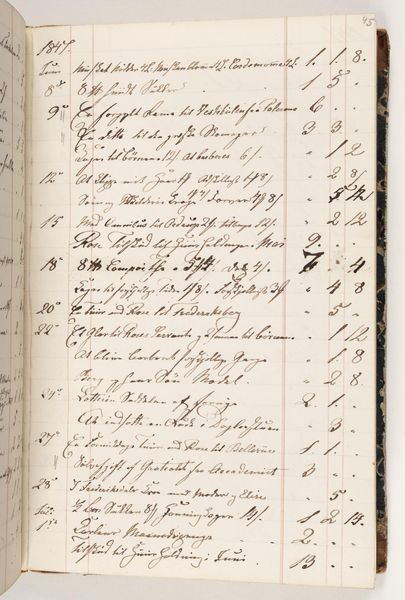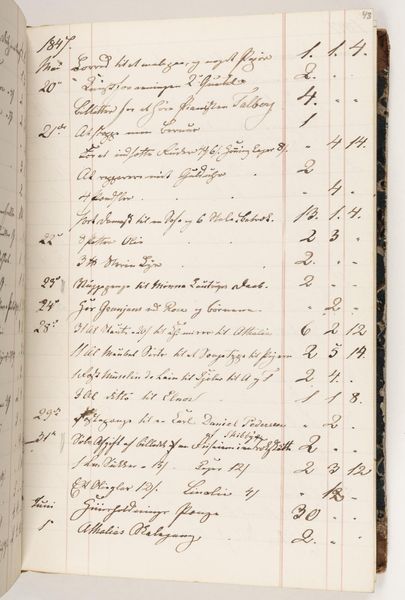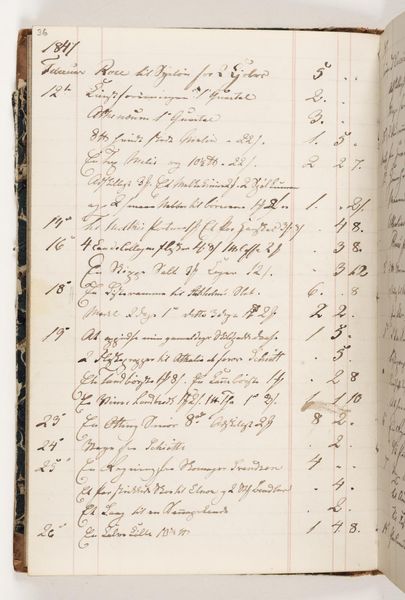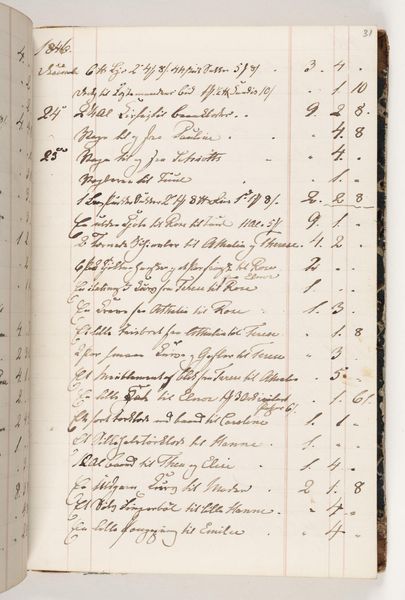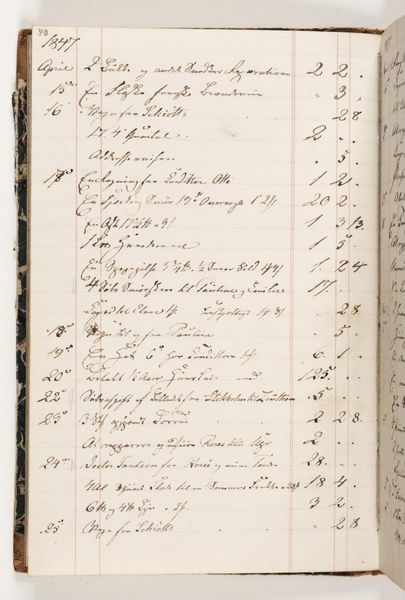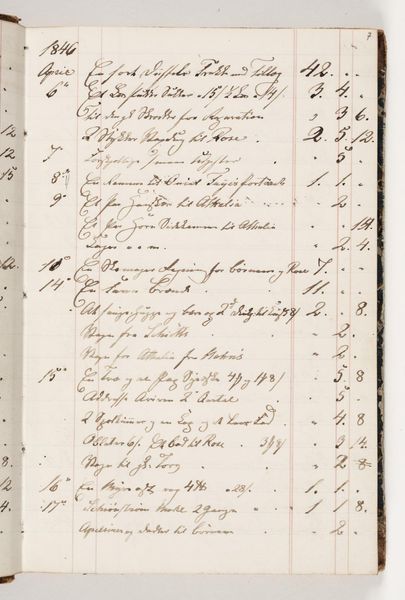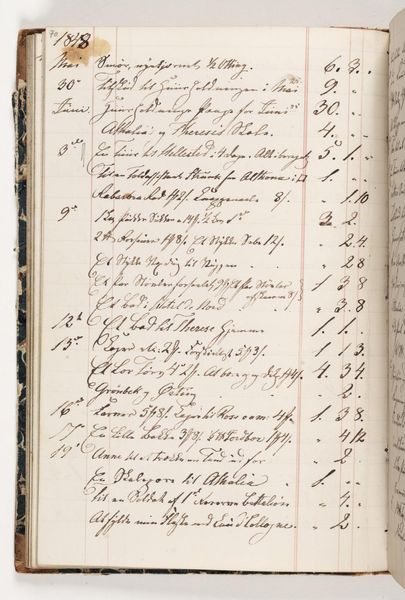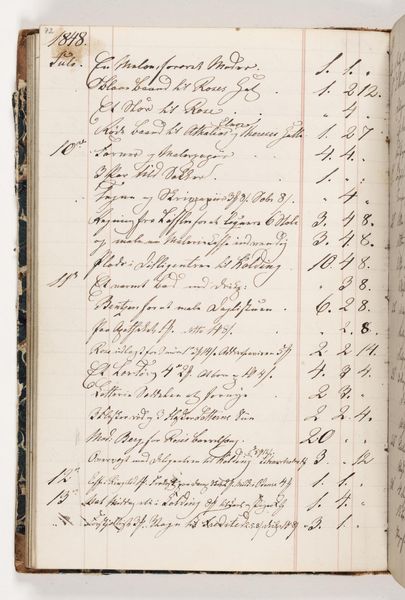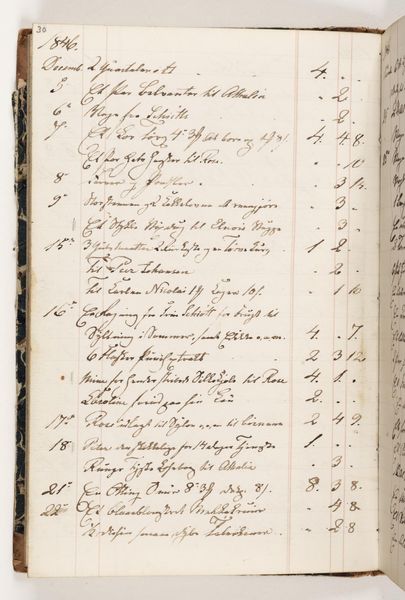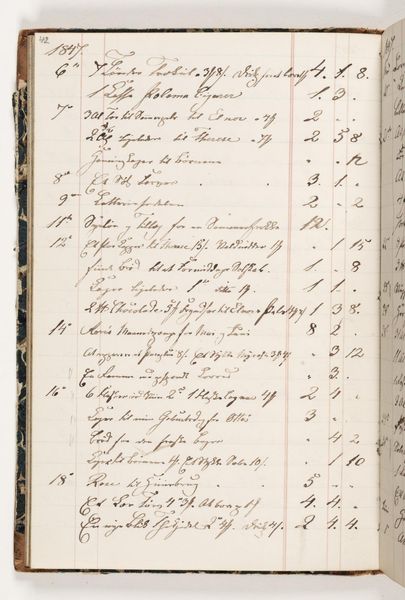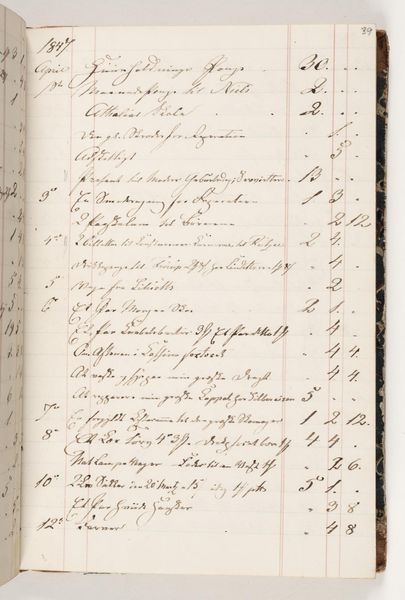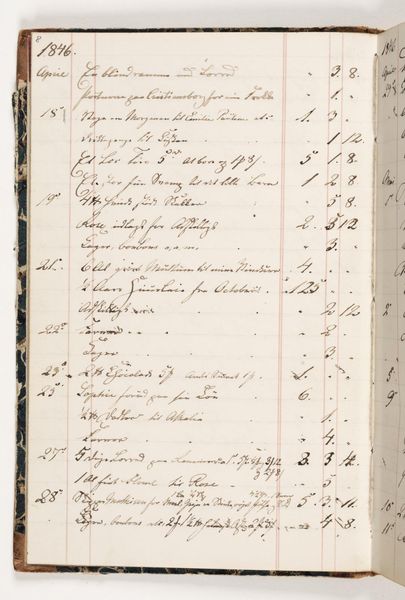
drawing, paper, ink
#
drawing
#
paper
#
ink
#
genre-painting
#
calligraphy
Dimensions: 200 mm (height) x 130 mm (width) (bladmaal)
Curator: Here we have "Regnskab 1846," or "Account 1846," a drawing made with ink on paper by Martinus Rørbye. Editor: My initial feeling is that this is so detailed; the tight script almost overwhelms the eye. It looks like a page torn from an old ledger, evoking ideas of bureaucracy and the passage of time. Curator: Indeed. Rørbye, while known for his paintings of architecture and scenes from his travels, often engaged in smaller, more intimate works like this one. It reflects the increasing bureaucratization of Danish society during this era, with every krone accounted for. How might we consider the act of accounting as a form of social control? Editor: Absolutely, the meticulous recording speaks to power structures at play. Who was keeping these accounts, and what did access to this kind of financial detail mean in the mid-19th century? I imagine that access was limited by class, gender, etc. What story is this document subtly reinforcing about wealth and privilege? Curator: Well, understanding the socio-economic climate helps to uncover the values of that period. It points to how a nation defined progress. The precision in his calligraphy seems to mirror an anxiety, perhaps, about control over resources and ensuring nothing is lost. This is, in some ways, about constructing a very specific vision of order and societal advancement through fiscal management. Editor: It’s fascinating how something seemingly mundane like an account page can reflect broader anxieties and societal projects. Thinking about this artwork in the context of the political project of building the Danish state, and Rørbye's relationship to this project is interesting to consider. Curator: Precisely. What appeared to be a simple genre-painting unveils an engagement with administrative history, reminding us that art often functions as a visual record of the everyday mechanics of power. Editor: So, we started with the simple form and are now thinking about questions of governance and even national identity, quite a journey sparked by ink on paper!
Comments
No comments
Be the first to comment and join the conversation on the ultimate creative platform.
